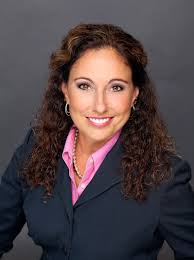Supply Chain Leadership Series VI: Pam Heminger, Senior Vice President of Procurement & Planning, Caterpillar
Driving Transformation in a Global Organization
Pam Heminger knows a thing or two about transformation. During her 24 years at Honda of America, she helped implement many of the supply chain best practices that have now become renowned, including cost modeling, supplier development, supplier quality assurance, lean manufacturing, and many others, which evolved under the original North America leadership of Dave Nelson.

During that time, she worked in a number of different areas including direct procurement, indirect procurement, operations, supply chain, packaging, and operations support including: HR, finance, IT and facilities management. Pam notes that “this foundation, discipline, and culture was wonderful for preparing me for my current role.”
Now, Pam is helping lead a digital procurement transformation for Caterpillar Inc. – another industry leader. With 2022 sales and revenues of $59.4 billion, Caterpillar Inc. is the world’s leading manufacturer of construction and mining equipment, off-highway diesel and natural gas engines, industrial gas turbines and diesel-electric locomotives. “For nearly 100 years, Caterpillar has been helping customers build a better, more sustainable world. And, we recognize that a one-size-fits-all approach does not always work for our dealers or customers. As their needs are changing, we need to evolve to meet those needs. At the end of the day, we want Caterpillar to be the easy choice throughout the entire equipment lifecycle to reflect our commitment to create greater customer value and loyalty by providing the right solutions and technologies, for the right applications, in the right geographies.”
Under Pam’s leadership, her organization is focused on creating and sustaining process efficiency within this complex environment. “My responsibility is to enable operational excellence within our total supply chain, by providing data and insights to our associates to help them make better decisions. One thing we have done is to create digital tools to ensure that we are not creating variations or derivations of parts that have already been designed and created. We are releasing new products all the time, so it is important that we design using a common, similar parts catalog. As we go through this transition, we know that new products will increase part numbers, creating a need to have systems that service the existing equipment in the field while we transition to the new product platforms. It’s all about efficiency in how we manage our business.”
Pam describes her biggest challenge to be implementing large scale change in a global organization like Caterpillar.
“My big challenge, and resulting opportunity, is driving effective change management, focused on technology and process adoption, along with the needed behavior changes throughout Caterpillar and even within our supply base. We’re not only asking valued partners to do things in a new way. We’re asking them to think differently. We’re depending on them to gain a digital mindset and to join us in building the future. That’s a big ask – and we do not take that lightly. That said, our solutions must solve business problems in the here and now. That takes a commitment to myself – and from my team – to create relationships with colleagues at all levels of the company, to step into their shoes to understand their challenges and gain credibility.”
Pam also commented on how important it is for supply chain managers to be both well-rounded, but to also have specialized expertise in a specific area. “The most important quality of the best managers is to be a continuous learner – to be interested in understanding and developing and enhancing your mind…while also working on your financial acumen. Finance is important to understand the return on investment of different efforts, the cash flow models, and the value and power of both sides of the equation, inventory management and supply chain risk. This can help you identify the right balance between these different parameters.”
“Some of the key enablers to success in supply chain is to engage people in a conversation, have strong emotional intelligence, and be able to influence others. It doesn’t matter whether you come in at an entry level or aspire to be at higher levels, your ability to network and influence others is essential. To achieve this, you must be able to understand your audience.”
“One of the most important transformations taking place is harnessing the power of digitization and internal use of artificial intelligence. We need technologies that will provide valued insights that can dynamically determine differences between parts purchased, routing optimization, footprint strategies and more. A simple example would be determining if a gear is a casting or a forging, which will impact what we buy and how we go about sourcing. We are relying on these technologies to move faster on sourcing decisions . Today it gets us at least 85% of the way there – and the human intelligence takes it from there.”


